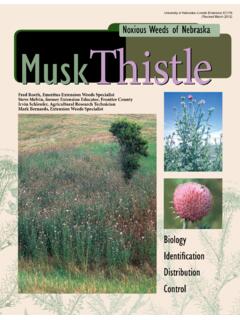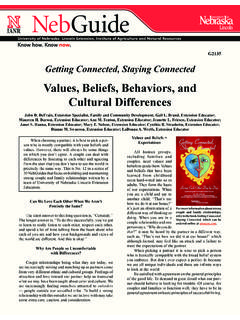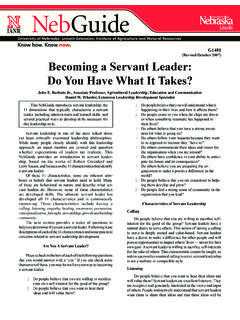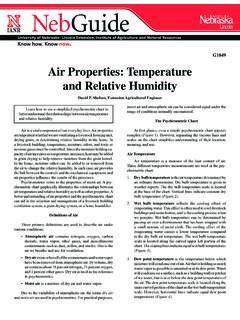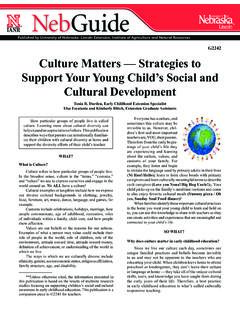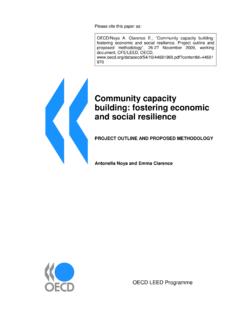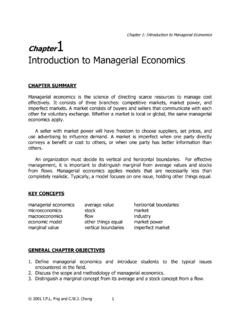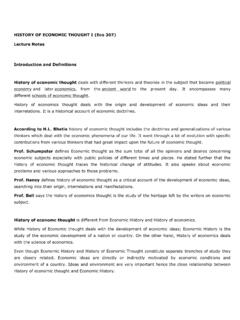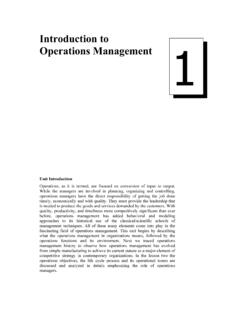Transcription of Introduction to Plant Diseases - University of Nebraska ...
1 EXTENSION. Know how. Know now. EC1273. Introduction to Plant Diseases Amy D. Timmerman, Associate Extension Educator Kevin A. Korus, Assistant Extension Educator Environment disease Host Pathogen Extension is a Division of the Institute of Agriculture and Natural Resources at the University of Nebraska Lincoln cooperating with the Counties and the United States Department of Agriculture. University of Nebraska Lincoln Extension educational programs abide with the nondiscrimination policies of the University of Nebraska Lincoln and the United States Department of Agriculture. 2014, The Board of Regents of the University of Nebraska on behalf of the University of Nebraska Lincoln Extension. All rights reserved. Introduction to Plant Diseases Amy D. Timmerman, Associate Extension Educator Kevin Korus, Assistant Extension Educator Plant Diseases have impacted soci- ety and world history.
2 The great Irish potato famine in 1845 is historically one of the most important human . events caused by Plant disease . Pota- toes infected with Phytophthora late blight caused vines to die prematurely and tubers to rot in the ground and in storage. Because of this disease , approximately 2 million people either starved to death or immigrated to the United States. More recent examples of Diseases impacting landscape trees include chestnut blight and Dutch elm disease . Both of these Diseases were accidentally introduced to the United States and have caused great economic losses. All plants can be affected by Figure 1. Ice damage to trees is an abiotic injury that could Diseases . This publication imparts a potentially produce wounds allowing entry by some Plant basic understanding of how Diseases pathogens. develop. Gardeners and landscape managers will gain an appreciation for the complexity of Plant Diseases .
3 Biotic or infectious Diseases . viroids , nematodes, and parasitic high- These Diseases are caused by living er plants are all Plant pathogens. Plant Diseases organisms. They are called Plant pathogens when they infect plants. Fungi and Fungal-like Organ- For the purposes of discussing isms (FLOs). Collectively, fungi A Plant disease is defined as and FLOs cause the most Plant Plant pathology, only Plant disease anything that prevents a Plant from disease than any group of Plant pathogens will be discussed. performing to its maximum potential. pathogens. These organisms can- Pathogens can spread from Plant This definition is broad and includes not make their own food, lack to Plant and may infect all types abiotic and biotic Plant Diseases . chlorophyll , have filamentous of Plant tissue including leaves, shoots, stems, crowns, roots, growth, and may or may not Abiotic or non-infectious Diseases .
4 Tubers , fruit, seeds, and vascular reproduce by spores. Fungi and These Diseases are caused by con- tissues (Figure 2). FLOs are able to overwinter in ditions external to the Plant , not soil or on Plant debris. However, living agents. They cannot spread some fungi and FLOs can not from Plant to Plant , but are very Types of Plant Pathogens over winter in northern climates common and should be considered because of low winter tempera- when assessing the health of any tures. These pathogens overwinter Plant . Examples of abiotic Diseases Plant pathogens are very similar in southern climates and then are include nutritional deficiencies, soil to those that cause disease in humans transported by air currents back to compaction, salt injury, ice, and sun and animals. Fungi, fungal-like organ- northern climates. disease move- scorch (Figure 1).
5 Isms, bacteria, phytoplasmas, viruses, ment from southern to northern The Board of Regents of the University of Nebraska . All rights reserved. 3. climates can be monitored during the growing season. Bacteria. Bacteria are single-celled microscopic organisms with cell walls that reproduce by binary fission (one cell splits into two). Introduction to the Plant must occur through natural openings or wounds in the Plant . Bacteria overwinter primarily in soil and in or on Plant material that does not decompose, but some survive inside insect vectors (Figure 3). Phytoplasmas. Phytoplasmas are microscopic, bacteria-like organ- isms that lack cell walls and thus appear filamentous (Figure 4). Viruses and viroids. Viruses are intracellular (live inside the cell) nucleic acid particles with a protein coat that infect other living organisms and replicate in the hosts they infect.
6 Viroids are virus-like particles but lack a pro- tein coat. Viruses and viroids are primarily transmitted by vectors including insects, nematodes, and fungi, which introduce the virus Figure 2. Brown rot of apricot is a biotic disease . The or viroid during feeding. Viruses brown fuzzy mass visible on the fruit is the spores that and viroids also can be transmit- will move to infect a neighboring apricot. ted through seed, vegetative prop- agation and pruning (Figure 5). Nematodes. Nematodes are mi- croscopic worm-like animals. The majority of nematodes are soil dwelling animals and move with soil. However, there are some nematodes that are transmitted through insects and infect above . ground Plant parts (Figure 6). Parasitic higher plants. Para- sitic higher plants are plants that contain chlorophyll but cannot produce their own food.
7 They parasitize other plants to obtain nutrients and water. Examples include mistletoe and dodder Figure 3. Bacterial blight of geranium caused by Xanthomonas (Figure 7). hortorum pv. pelargonii. Bacterial lesions are often blocky or angular and later have yellow halos around them. (Photo courtesy of Nancy Gregory, University of Delaware, ). 4 The Board of Regents of the University of Nebraska . All rights reserved. variables that may affect both the incidence and severity of disease . b These variables include genetic diversity , biology and life cycle of the host Plant and pathogen, and environmental conditions . Genetic diversity. Within one species of host Plant there may be an incredible range of genetic diversity that greatly influences susceptibility to any particular species of pathogen. If the host is resistant to a pathogen, even when the pathogen is present under favorable environmental condi- Figure 4.
8 Aster yellows is caused by a phytoplasma and is carried tions, disease will not occur (Figure primarily by leafhoppers. As an infected leafhopper feeds on plants, 9). Genetic diversity also plays a role the phytoplasma is injected into the Plant . Symptoms, such as the in pathogen virulence or its ability to unusual flower growth, are exhibited on plants that have been infected. infect a host and cause disease , which An infected Plant needs to be removed so insects feeding on it will may also influence the amount and not transfer the phytoplasma to other plants. (Photo courtesy of Anne severity of disease . Streich, UNL Agronomy and Horticulture). Biology and life cycle of the host Plant and pathogen. Host plants may be resistant to pathogens at one stage of development but not at another. In a similar manner, some pathogens must be at a critical life stage in order to cause infection.
9 Environmental conditions . There are numerous variables in the environ- ment that influence disease incidence and severity including temperature, sunlight, moisture, relative humidity, and time of year. Pathogens are typi- cally restricted to an area based on the conditions of the macroclimate. A. macroclimate is the prevailing climatic conditions in a certain geographical area. Within a macroclimate, small areas may exist in which the climate Figure 5. Rose infected by rose mosaic virus which causes mottling may be different than the surrounding of the leaf tissue. This disease is spread by vegetative propagation. areas. This is called a microclimate. (Photo courtesy of Lesley Ingram, ) Each landscape is filled with micro . climates that exist because of differ- ences in exposure to sun and wind, soil 3. A favorable environment type, and many other factors.
10 disease Triangle When these three components are Three components are absolutely present at the same time, disease will disease Cycles necessary for disease to occur in any occur (Figure 8). Plant system: It is important to remember In order for disease to develop, 1. A susceptible host Plant that within each of the three com- a pathogen must be present and suc- ponents host, pathogen, and cessfully invade Plant host tissues and 2. A virulent pathogen environment there are numerous cells. The chain of events involved The Board of Regents of the University of Nebraska . All rights reserved. 5. a b c Figure 6. Pinewood nematodes (a) are carried to pines by pine sawyer beetles. Once inside a tree, the nematodes can reproduce quickly and cause complete tree failure within just a few weeks (b and c) Aug. 20 to Sept. 2. (Photos b and c courtesy Laurie Stepanek, Nebraska Forest Service).

